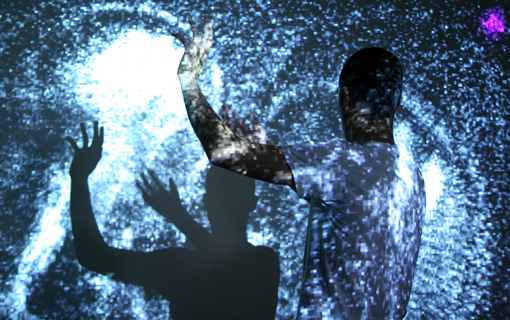Nanotechnology: a template for transdisciplinary practice
Posted on December 19, 2010 | posted by: Ettore Sottsas believed that one of the most salient characteristics of an intellectual – and he was the first self proclaimed intellectual designer – is the ability to compare what is to what could be. The sciences – both social and natural – explore what the world is, whereas design engages with the possibilities of what that world could become. On September 23, Victoria Vesna gave us a presentation on nanotechnology and her design collaborations within the field. Her lecture hit a pivotal chord: this work that falls between the disciplines of science and design – the “what is” and “what if” – could be perceived as true intellectual work.
Ettore Sottsas believed that one of the most salient characteristics of an intellectual – and he was the first self proclaimed intellectual designer – is the ability to compare what is to what could be. The sciences – both social and natural – explore what the world is, whereas design engages with the possibilities of what that world could become. On September 23, Victoria Vesna gave us a presentation on nanotechnology and her design collaborations within the field. Her lecture hit a pivotal chord: this work that falls between the disciplines of science and design – the “what is” and “what if” – could be perceived as true intellectual work.
Beyond this being an intellectual exercise, such work could be full of emergent discoveries. Emergence, according to Mark Taylor “occurs in a narrow possibility space lying between conditions that are too ordered and too disordered. This boundary or margin is ‘the edge of chaos’ which is always far from equilibrium.” Stuart Kauffman also talks about work at the edge of equilibrium: “Just near this phase transition, just at the edge of chaos, the most complex behavior can occur orderly enough to ensure stability, yet full of flexibility and surprise.” The complex design work produced through nanotechnology could therefore be full of surprising revelations for the rest of the design disciplines.
For more than a decade designers have been looking into many new playgrounds; from business, to social, medical, scientific or engineering. In most occurrences we find ourselves as outsiders, we are invited to collaborate on complex problems and then leave through the backdoor once a project is delivered. What Vesna put forth in her lecture is that nanotechnology has no authority, it is an open field where scientists and designers can enter at the same level, collaborate at the same level and generate content together. Therefore, in the process of imagining an MFA in Transdisciplinary design, nanotechnology seems to be an ideal template for such a collaboration that truly transcends disciplines and generates new work that is intellectual, participatory, and transformative.